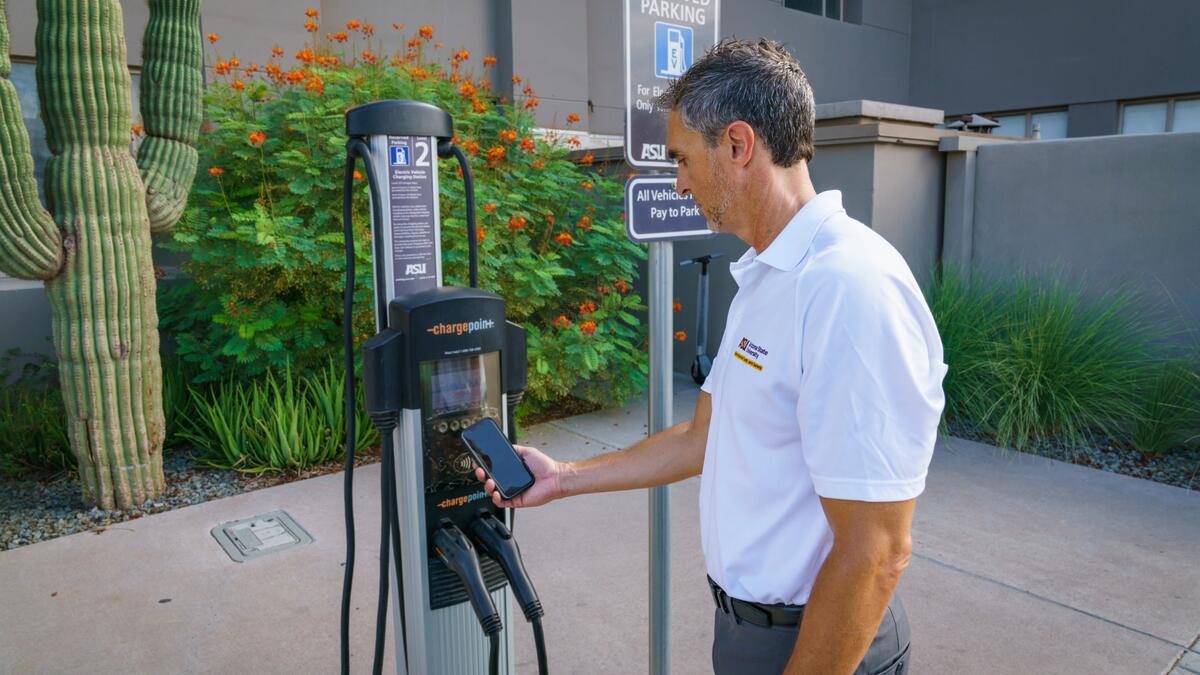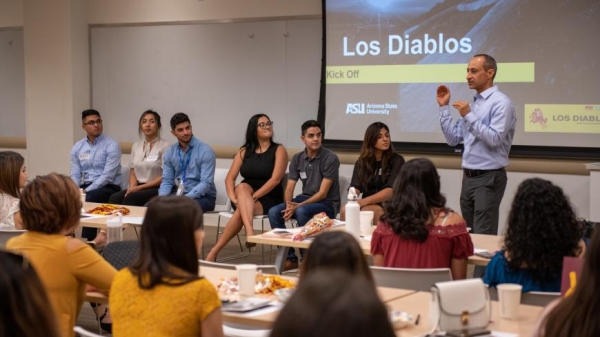ASU expands EV charging, increases sustainable transit options

ASU has partnered with ChargePoint for its on-campus EV charging stations. ASU photo
Arizona State University will introduce five new electric vehicle (EV) charging stations in the Mill Avenue Parking Structure when it opens in September 2023, increasing ASU’s total to 120 EV charging ports across all campuses. Each charging station typically has two ports that two vehicles can use simultaneously.
The new EV charging stations support ASU’s ongoing efforts to be a fully sustainable university.
“Expanding access to electric charging stations across ASU is part of the university’s commitment to carbon neutrality,” said Marc Campbell, executive director of University Sustainability Practices, ASU's in-house sustainability consulting service. “It shows the surrounding communities that we are implementing the sustainability practices we advocate.”
ASU is also working to shift its fossil fuel-powered vehicles to electric models over a multiyear process. ASU Parking and Transit Services will oversee the installation of 42 additional EV charging stations reserved for ASU vehicles. Having department-specific charging stations gives Sun Devils more opportunities to use the 120 EV charging ports across campuses.
As part of its commitment to encourage sustainable transportation options, Parking and Transit Services will also add its first all-electric shuttle to its free intercampus shuttle service this semester, the first step in a long-term plan to add more electric shuttles to its fleet.
“Parking and Transit Services continues to promote and support environmentally friendly transportation options,” said Frank Castro, associate director of Parking and Transit Services. “We want to help ASU continue leading sustainability efforts.”
How to charge electric vehicles on campus
ASU has partnered with ChargePoint — North America’s largest EV charging station network — since 2017. Drivers can use charging stations with a ChargePoint card or the ChargePoint app. Sun Devils can use ChargePoint’s map to find the closest EV station. ChargePoint system members who visit ASU campuses may also access any on-campus charging stations.
Contact Frank Castro, associate director at Parking and Transit Services, to learn more about ASU’s EV charging stations.
Written by Nathan Cushing, Business and Finance Communications
More University news

Lester Godsey joins ASU as chief information security officer
With a career spanning nearly three decades of professional IT experience, Lester Godsey is back where he first started — serving…

ASU a top-ranked university for graduate employability
Students usually seek higher education degrees to build their skills and aptitude in their chosen vocation, and advance their…

ASU Alumni Association to honor 3 outstanding alumni leaders during Homecoming
The Arizona State University Alumni Association will proudly recognize three innovative alumni leaders during the Homecoming…